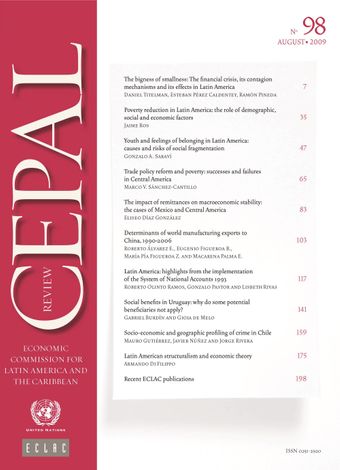-
Trade policy reform and poverty: Successes and failures in Central America
- Source: CEPAL Review, Volume 2009, Issue 98, Nov 2009, p. 65 - 82
- Spanish
-
- 03 Nov 2009
Abstract
During the past two decades, trade regimes in Latin America have been reformed to facilitate export-led growth, in the expectation that the benefits of this growth would eventually trickle down and thereby help the poor. These goals have been achieved to differing degrees. Their accomplishment has depended not only upon the effectiveness of the trade policy reforms but also upon exchange-rate policy, external shocks and remittance inflows. Technological change has also been crucial when it comes to capitalizing on the benefits of the reforms. These assertions are substantiated using simulation results from a computable general equilibrium model solved with data for Costa Rica, El Salvador and Honduras. The model is combined with a microsimulation methodology to capture the full distributive implications of simulated policy and external shocks.





